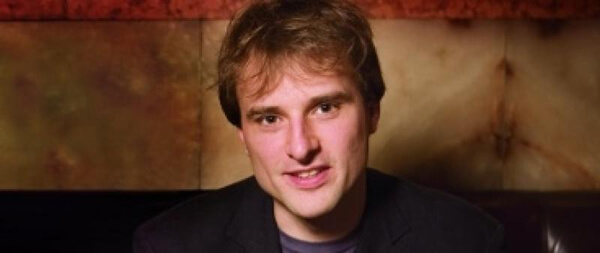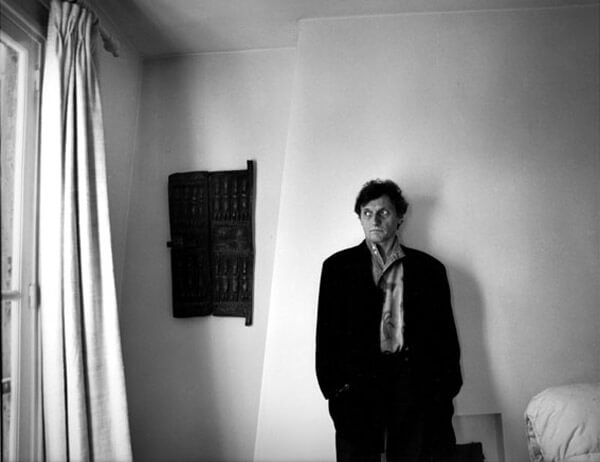 The London Sinfonietta continue to experiment with different approaches in their presentation of contemporary music, and they struck a winner with their Luke Bedford: In Portrait concert on 22 May 2013 at the Purcell Room of the Southbank Centre in London. Bedford is a young British composer, residing in Berlin, who has written in all major genres and was the first ever composer in resident at London’s Wigmore Hall. This Portrait Concert was more than justified, given Bedford’s increasing recognition for his compositions at home and abroad.
The London Sinfonietta continue to experiment with different approaches in their presentation of contemporary music, and they struck a winner with their Luke Bedford: In Portrait concert on 22 May 2013 at the Purcell Room of the Southbank Centre in London. Bedford is a young British composer, residing in Berlin, who has written in all major genres and was the first ever composer in resident at London’s Wigmore Hall. This Portrait Concert was more than justified, given Bedford’s increasing recognition for his compositions at home and abroad.

Composer Luke Bedford (photo credit: theartsdesk,com)
The centerpiece of this Portrait Concert was the premiere of a new work by Bedford, Renewal, which demonstrated his skill at crafting a work full of drama, a strong sense of musical direction, delicate and precise manipulation of colour, thematic development and harmonic language. What made this evening such a success for me was the interview with Bedford that took place before a repeat performance of Renewal in the second half of the concert. Bedford explained how since fatherhood he was keen to take risks in his composing, and this new work represented a departure for him in that is was for a moderately large ensemble (of strings, wind and percussion) and of a moderate length. It was Bedford’s reading of popular science – particularly astrophysics and quantum mechanics – that led to the core thinking behind Renewal as an exploration of the ideas of disorder and the disintegration of energy. The four sections (after an introduction) each deal with the same ideas but in different ways, as Bedford described, and the ideas are destroyed and renewed.

Conductor Sian Edwards (photo credit: Katie Vandyck)
The ensemble demonstrated four examples from the work, each given brief introductions by Bedford. First was the initial appearance of fast music in the piece, with a regular pulse, cross-rhythms and a melody in the piccolo and violin. The second, an eruption in the music following a bass drum solo, was a recapitulation of the material heard in the first example but seven times faster. A third example demonstrated a pulsing section where there are numerous chord changes that instigate shifts in tempi. Conductor Sian Edwards catered for these changes with aplomb and real precision. The final example, taken from the final section of the work, showed how the pulse previously ever-present in the work had evaporated, and we heard sounds closer to noise than precise pitches – the winds in particular, using only breath sounds. These were all very well chosen examples and having heard a performance before this interview, one was ready to receive the work again in a second performance.
The interview and second performance were a fantastic concept to adopt for this concert. A composer always hopes for a second performance, and to have had two in the same concert, as planned from the outset of the commission, must have been a real joy. Bedford was indeed grateful, as he expressed in the interview, as were the audience. Renewal deserves many subsequent performances.
Bedford’s recent work Wonderful No-Headed Nightingale (2011/12) opened the evening and gave a clear sense of the distinctive sound world of this composer; a range of timbral colour which includes quarter-tones, strong rhythmic identity, clear structure, and thematic development to destruction of musical ideas. Based on a story of singing conjoined-twins, one could hear the twins singing when the flute and violin played together. The version of of Wonderful No-Headed Nightingale performed was for ten players. It was adapted by the composer from the original version for two soloists and fifteen players. The four sections of the work include a build to a crisis point, writes Bedford, ‘and the music collapses, leaving just a series of stark chords.’ The players of the London Sinfonietta managed the quarter-tones with ease and precision. They are a perfect ensemble for capturing the eerie quality of the conjoined-twins singing.

Composer Gérard Grisey
Gérard Grisey’s Périodes from Les Espaces Acoustiques (1974) made an excellent programming choice to join the Bedford works. Grisey’s musical language connects with with Bedford’s, yet somehow extends it to embrace noise even further. This work for seven players was given a superb performance and one could hear a pin drop. It felt as if the audience was breathing in sync with the players, who captured the whole spectrum of ‘noises’ Grisey prescribes with their well-known virtuosic ease.




















